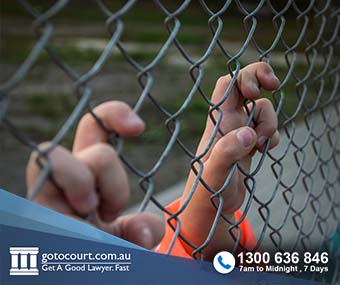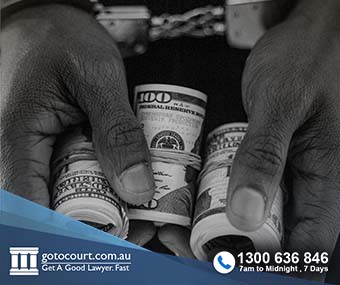Applying For Bail in the Children’s Court (Vic)
Applying For Bail in the Children’s Court (Vic)
Bail applications by children are governed by the Bail Act 1977 and the Children, Youth and Families Act 2005. There were significant changes made to Victoria’s bail laws in early 2025, including changes to the laws surrounding bail applications by children. This page outlines those changes and how bail applications in the Children’s Court will now be decided.
Community safety
Under section 1B (1AA) of the Bail Act 1977, a guiding principle of the Bail Act is maximising, to the greatest extent possible, the safety of the community and persons affected by crime. This principle was added into the Bail Act in 2025.
In the past, the Bail Act stated that remand should be a last resort for a young person. This was based on the principle that the youth justice system should be focussed on rehabilitation and supporting young person to develop into law abiding members of society.
This principle has been removed, and the primary consideration is now community safety, even in cases where the applicant for bail is a child.
The ‘unacceptable risk’ test
The ‘unacceptable risk’ test is a test that is applied to all bail applications. It is contained in section 4E of the Bail Act 1977.
The unacceptable risk test requires a bail authority to refuse bail if satisfied that there is an unacceptable risk that the person would:
- commit a Schedule 1 or Schedule 2 offence
- endanger the safety or welfare of another person
- interfere with a witness or obstruct the course of justice
- fail to surrender into custody in accordance with bail conditions.
The ‘exceptional circumstances’ test
When a young person is applying for bail in relation to certain serious offences, or where the young person is alleged to be a serious repeat offender, they will not be granted bail unless they satisfy the court that there are exceptional circumstances that justify the grant of bail.
This test applies in relation to all bail applications on Schedule 1 offences. It also applies to bail applications on Schedule 2 offences when the accused young person has a prior criminal record for certain serious offences.
Prior to 2025, there were fewer offences that required a person applying for bail to show exceptional circumstances.
Extra considerations when applicant is a child
When a person under 18 applies for bail, the court must consider a list of factors set out in section 3B of the Bail Act. These factors include:
- the child’s age, maturity and stage of development
- the need to impose the minimum intervention required
- the need to preserve the relationship between the child and their family or caregivers;
- the importance of supporting the child to live at home or in the community
- the desirability of allowing the child’s education or employment to continue uninterrupted;
- the need to minimise the stigma to the child from being remanded in custody;
- the likely sentence if the child is found guilty;
- the need to ensure that bail conditions are no more onerous than necessary
- the fact that custody involved risks for children
- the fact that some cohorts of children experience discrimination that results in over-representation in the criminal justice system.
This list no longer includes the principle that remand should be a last resort for a young person.
Bail conditions
When a young person is granted bail, the court may impose a range of bail conditions to address any concerns it has about their release. The conditions must be reasonable, not unduly onerous and consistent with any other orders the young person is subject to (such as an intervention order).
Bail conditions may include:
- to live at a specified address;
- to attend school;
- to abide by a curfew;
- to abstain from alcohol or other drugs;
- not to have contact with specified persons (such as alleged co-offenders or victims).
Breaches of bail in Victoria
A young person in Victoria can breach their bail in several ways.
It is a breach of bail to fail to appear at court when required to do so. This is also a criminal offence under section 30 of the Bail Act. The maximum penalty for this offence is imprisonment for two years.
It is a breach of bail to commit an indictable offence whilst on bail. This is also a criminal offence under section 30B of the Bail Act. It carries a maximum penalty of imprisonment for three months or a fine of 30 penalty units.
It is also an offence contravene a bail condition (such as a condition that a young person attend school while on bail). This offence is set out in section 49A of the Summary Offences Act 1966. It carries a maximum penalty of a fine of 30 penalty units or imprisonment for three months.
When a young person breaches their bail, the court may revoke, vary or continue bail as well as imposing a sentence for the offence. If bail is revoked because of a breach, the young person will be remanded in detention.
Remand
If a young person is not granted bail, they are kept in a youth detention centre until their matter is finalised or until they are granted bail. When a young person is in custody, they must be held separately to any adults who are also in custody. This means that when a young person is temporarily held in the cells at court or in a police station, they must be in a separate cell from any adults.
If you require legal advice or representation in any legal matter, please contact Go To Court Lawyers.

Affordable Lawyers
Our Go To Court Lawyers will assist you in all areas of law. We specialise in providing legal advice urgently – at the time when you need it most. If you need a lawyer right now, today, we can help you – no matter where you are in Australia.How It Works




1. You speak directly to a lawyer
When you call the Go To Court Legal Hotline, you will be connected directly to a lawyer, every time.

2. Get your legal situation assessed
We determine the best way forward in your legal matter, free of charge. If you want to go ahead and book a face-to-face appointment, we will connect you with a specialist in your local area.

3. We arrange everything as needed
If you want to go ahead and book a fact-to-face appointment, we will connect you with a specialist in your local area no matter where you are and even at very short notice.











